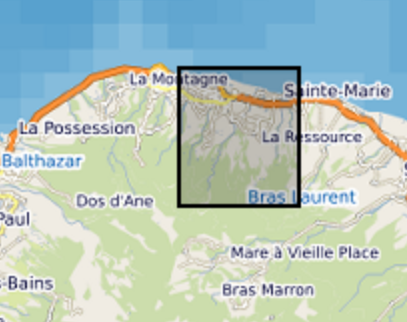UMS3365
Type of resources
Available actions
Topics
INSPIRE themes
Keywords
Contact for the resource
Provided by
Years
Formats
Representation types
Update frequencies
status
Scale
-

Elevational Transect on the West side of the Piton des Neiges. Implementation of small permanents plots every 200 m of height between 750 and 2350 m. Differents biotics and abiotics parameters are observed on plots: - Climatic variables (T, RH) - Physico-chemical analyses of grounds - Inventories of vegetation, arthropods
-

Instrumentation in river. The parameters are the following ones: - water level (available) - Temperature (available) - Conductivity (to set up) - Turbidity (available) - pH / dissolved oxygen / Potential oxydo-reduction (to set up) Laboratoire Géosciences Réunion – IPGP
-

Climatological data from the meteo station of Piton Fougeres (alt.1300 m), Reunion Island - Air temperature - Air relative humidity - Soil temperature - Soil humidity - Leaf wetness sensor - Pluviometry - Photosynthetically Active Radiation (PAR)
-

Rain gauge measurements in watershed "Rivière des Pluies", Reunion Island 2 types of rain gauge: - Pluviographe: rain gauge with tipping (0,2 mm). Location: Piton Fougères - Adding rain gauges which is applied the chemistry water protocol. Location: Piton Fougères and University (Moufia-Saint Denis) Laboratoire Géosciences Réunion – IPGP
-

Piezometer measurements in watershed "Rivière des Pluies", Reunion Island Continuous measures in groundwater: - Level water (systematically) - Temperature (sometimes) - Conductivity (sometimes) Laboratoire Géosciences Réunion – IPGP
-

Meteo station Vantage Pro 2 Recorded parameters: - Wind speed and direction - Pluviometer - Temperature - Humidity (inside shelter) and outside - Barometric pressure Data transmission towards station of acquisition via WiFi. This station is connected on a PC Windows software.
-

The coastline or shoreline is the geographical boundary between sea and land. It corresponds according to the SHOM to "the leash of the highest seas in the context of an astronomical tide of coefficient 120 and under normal weather conditions (without overcost phenomenon). The coastline as defined above is not directly identifiable continuously on the ground or on a satellite or aerial image. From a perspective of studying the displacement of the shoreline, indicators allow us to approach this notion (the vegetation limit associated with the infrastructure limit, the beach limit, etc.). On the reef shoreline of Reunion Island the limit of vegetation and infrastructure as well as beach limit were retained. This limit results in the production of a line-type vector geographic information layer in a GIS resulting from photo-interpolation on the orthophotos of IGN also called BD ORTHO. BD ORTHO is a component of the RGE®. These are digital color orthophotos supplied in raster format (tiff, ecw, ..). An orthophotography is a digital image that has the same metrics as a map of the same projection for the same elements on the ground. They have been available since 1997 in Réunion with a five-year repeatability. Their spatial resolution increased from 1 m in 1997 to 50 cm in 2003. UMR Espace-Dev
-

Elevational Transect on the East side of the Piton des Neiges. Implementation of small permanents plots every 200 m of height between 350 m and 2950 m. Differents biotics and abiotics parameters are observed on plots: - Climatic variables (T, RH) - Physico-chemical analyses of grounds - Vegetation and arthropods inventories...
-

The coastline or shoreline is the geographical boundary between sea and land. It corresponds according to the SHOM to "the leash of the highest seas in the context of an astronomical tide of coefficient 120 and under normal weather conditions (without overcost phenomenon). The coastline as defined above is not directly identifiable continuously on the ground or on a satellite or aerial image. From a perspective of studying the displacement of the shoreline, indicators allow us to approach this notion (the vegetation limit associated with the infrastructure limit, the beach limit, etc.). On the reef shoreline of Reunion Island the limit of vegetation and infrastructure as well as beach limit were retained. This limit results in the production of a line-type vector geographic information layer in a GIS resulting from the photo-interpolation on Pléiades satellite images. Pleiades satellite images from the Kalideos Réunion database (CNES) have been used since 2016 to study the position of the shoreline annually. Launched in 2011, Pléiades is a very high spatial resolution spatial image system (panchromatic optical instrument at 70 cm and 2.8 m multispectral) operating in the visible and near infrared with a swath of 20 km UMR Espace-Dev
-

Climatic data from the meteorological station of Mare Longue (primary forest, 300m of elevation) UMR PVBMT
 Geosur
Geosur